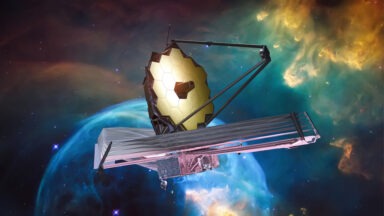The Longest Lunar Eclipse of the Century is This Week

The longest partial lunar eclipse is this week. What can we learn from the ancients about this celestial transitional event?
In the early morning hours of November 19, the moon will be in partial eclipse. NASA says the moon will slip behind the Earth’s shadow for about two and a half hours, and weather permitting, a huge swatch of the planet will be able to see at least some of the eclipse. The moon, as well as other celestial bodies, have played a big role in the lives of ancient peoples, mystics, and shamans.
Jack Cary, researcher and author of “Paranormal Planet,” said about the history and significance of the eclipse, “In ancient times, eclipses were always seen as an omen, whether it be good or bad. As the sun or the moon becomes shaded over, you’re seeing a connection both of the feminine and the masculine qualities of existence, and because of that it was seen as a holy union.”
What is the connection between the moon and divine feminine energy throughout history?
“The moon itself has always been seen as the goddess of the sky, and because of that all goddesses that were worshipped around the world in ancient civilizations all had this symbolism of the moon itself,” Cary said.
What did the ancient people know about the planets that we should remember now?
“In ancient times, Pythagoras, who was the inventor of a cult that worshipped numbers, came up with the idea of the ‘music of the spheres,’ this idea that each planet had its own frequency kind of like a musical scale. And these eclipses, when they line up with one another, have an effect, a vibrational effect, that then encompasses the entire magnetic field of the Earth and actually affects biology on this planet,” Cary said.
For many cultures, the eclipse is a symbol of change, a time for rejuvenation and renewal. How do we honor the planets and ourselves during this time of change?
“There are many mysteries of the moon. The ancients, as they saw these omens, didn’t realize that every ancient civilization saw that as an omen. I think what we can learn is that these are moments when we can both stand in respect and awe of the celestial movements of the planets, just even in our solar system, and just how sacred that is. The most important part I think is looking inward and then making that cosmic connection that is representative of an eclipse,” Cary said.
To best see this eclipse, NASA says it will begin at about 2:00 am on the East Coast of the United States and 11:00 pm on the West Coast.
Will NASA's New Telescope Discover ET Life?

The spectacular first images from the James Webb Space Telescope are finally here and they do not disappoint.
After years of planning, construction, delays, and a cost of about $10 billion, we finally have the first images from the James Webb Space Telescope. Launched in December of 2021, the JWST is the largest and most powerful space telescope ever to be put in space.
Astronomers have waited a lifetime to see with such amazing clarity deep into space. JWST does this by operating in the infrared spectrum; it “sees” light that is outside the visible spectrum of our naked eye and previous telescopes like Hubble.
NASA released photos of the first five targets noting, “These first images from the world’s largest and most powerful space telescope demonstrate Webb at its full power, ready to begin its mission to unfold the infrared universe.”
We caught up with astronomer and Gaia News contributor Marc D’Antonio on the road in Arizona, to break down the images.
“I saw these images and the release of all five different images represent a different aspect of what this telescope can do — absolutely astonishing to me — from galaxies to gas clouds, this telescope hands down, has the ability to show us so much that we don’t understand.”


































